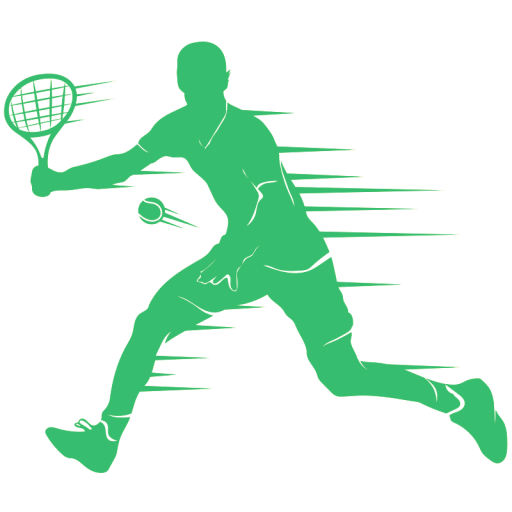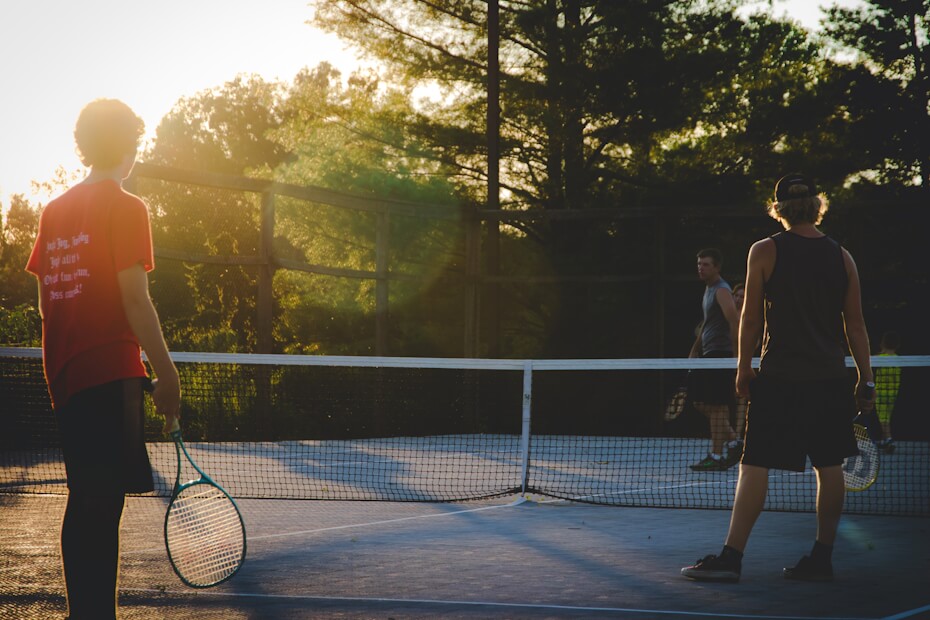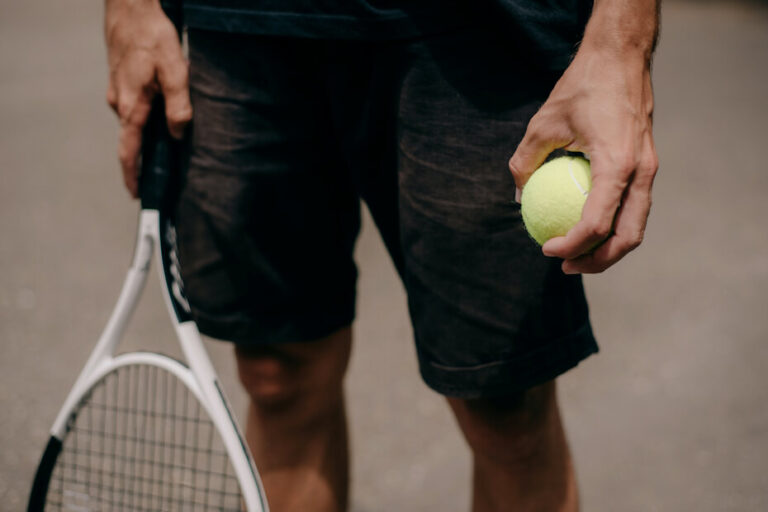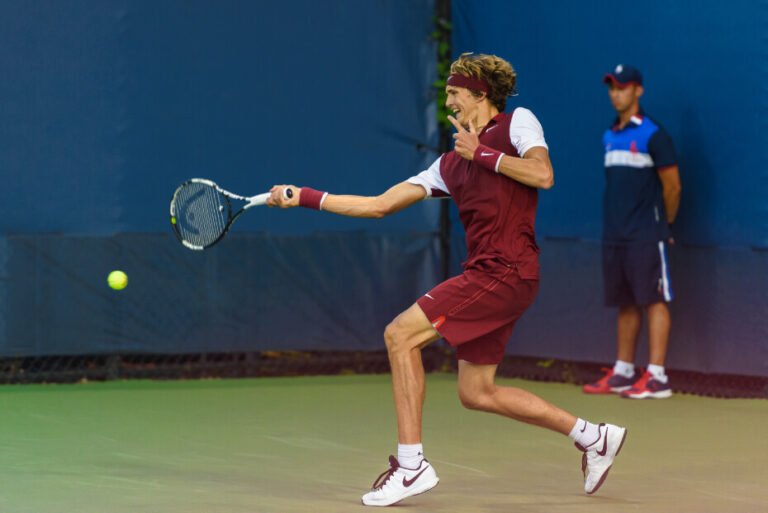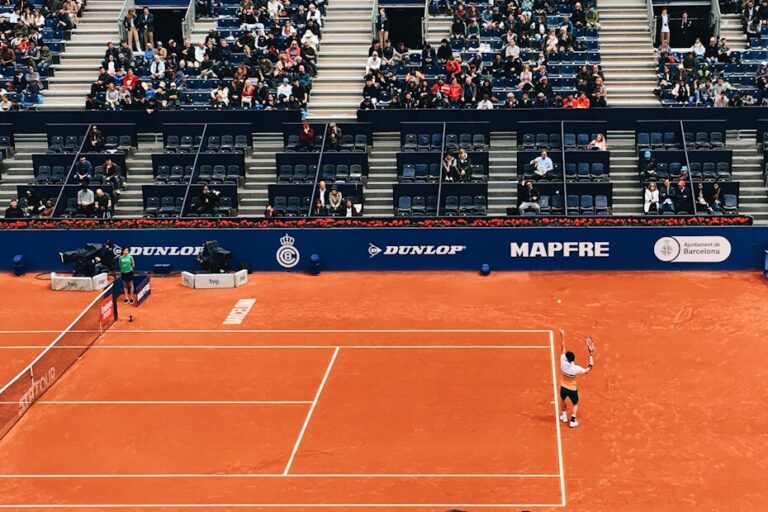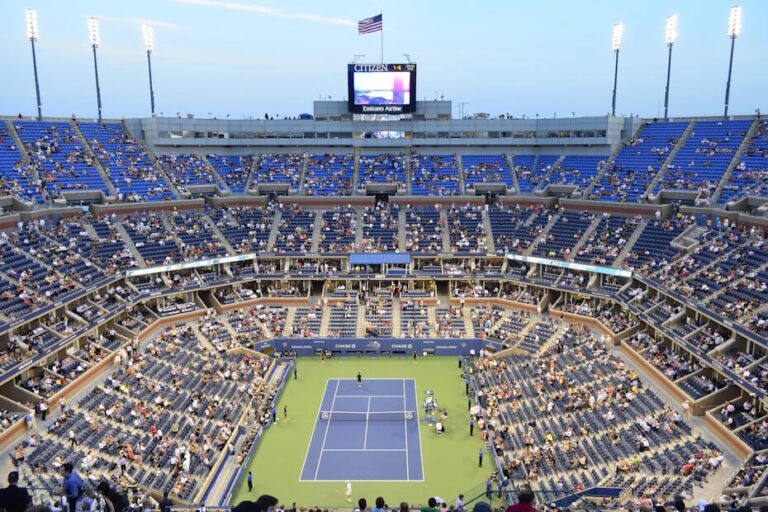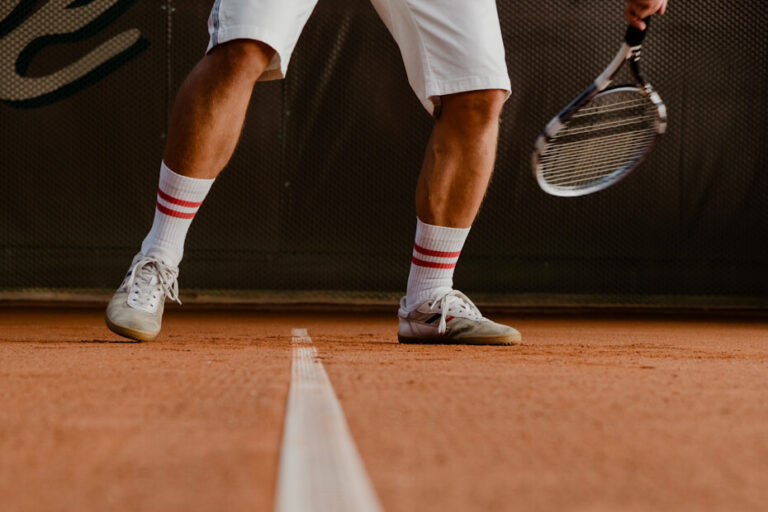When it comes to sports, the question of wealth often comes into play. Tennis, in particular, has a reputation for being a rich person’s sport. But is this really the case? Let’s take a closer look.
The perception of tennis as a rich person’s sport is not without reason. It’s a sport that requires certain resources that can be costly. From the equipment, like high-quality rackets and balls, to hiring professional coaches for training, the costs can add up quickly. Moreover, access to tennis courts, especially indoor ones or those in upscale clubs, can be expensive.
Another factor contributing to this perception is the portrayal of tennis in popular culture. Often, it is associated with upper-class society and luxury. The media and films often depict tennis players as individuals from wealthy backgrounds who have the luxury of time to practice the sport.
History and Popularity of Tennis
The game of tennis originated in northern France in the 12th century. It was initially a courtly pastime enjoyed by the nobility. The sport was played indoors, with the ball being hit against the walls. This early form of tennis was an exclusive sport for the elite, which laid the foundation for its association with wealth and status.
In the 19th century, modern lawn tennis was developed and quickly gained popularity among the upper class in England. The first Wimbledon Championship in 1877 further cemented tennis as a prestigious sport. The cost of equipment and membership to exclusive clubs meant that tennis remained largely inaccessible to lower-income individuals, reinforcing its image as a rich person’s sport.
The Cost of Playing Tennis
Playing any sport comes with its associated costs, and tennis is no exception. The cost of playing tennis can range from quite affordable to quite expensive, depending on various factors, including equipment, lessons, court fees, and competitions.
Cost of Equipment
The primary pieces of tennis equipment are a tennis racket and tennis balls. Mid-range tennis rackets can cost anywhere between $50-$200, while professional-grade rackets can go up to $500. Tennis balls are relatively inexpensive, with a pack of three typically costing under $5. Other important equipment includes athletic attire and tennis shoes, which can vary in cost, but expect to set aside around $100-$150 for good quality apparel and footwear.
Lessons and Coaching
Tennis lessons can be a significant cost depending on your level of seriousness towards the sport. A beginner seeking to learn the basic skills may spend $30-$50 per hour on a lesson, while professional coaching can cost $100 or more per hour. Group lessons can lower the cost per person as a trade-off for individual attention. Additionally, aspiring players who take part in tennis academies or camps can expect a cost ranging from a few hundred to several thousand dollars per year.
Membership and Court Fees
The cost of court hire can vary significantly depending on the location and facilities. Public courts are usually free or reasonably priced, while private clubs or indoor courts charge higher rates, ranging from $10 to $50 per hour. Furthermore, if you opt for a tennis club membership, the price can range from a few hundred to several thousand dollars per year, depending on the club’s exclusivity and amenities.
Competing and Travelling
Getting involved in competitions has its costs, such as entry fees, which can range from a few dollars for local competitions to tens or even hundreds of dollars for larger, prestigious tournaments. Traveling for tournaments can also add substantially to the cost, including expenses for transportation, accommodation, and meals.
Cost of Casual vs. Professional Play
The cost of playing tennis varies greatly depending on whether you are a casual player or a professional.
For casual players, the initial cost is relatively low. A basic racket and a can of balls can be bought for under $50, and many public parks have free access to tennis courts. The running costs for a casual player are minimal – replacing balls and perhaps the occasional new racket or pair of tennis shoes.
However, for anyone looking to advance beyond casual play, costs can quickly escalate. Better quality rackets and shoes are more expensive, and as the level of play increases, so too does the wear and tear on these items, necessitating more frequent replacements. Court fees can also start to add up, particularly for those who prefer to play indoors or on higher-quality surfaces like clay or grass courts.
Professional players face significantly higher costs. Traveling to and participating in tournaments around the world can cost thousands of dollars per year in airfare alone, and that’s without considering accommodation, food, and other expenses. Professional players also need to invest in regular coaching and physical training.
Lower-level professional players, in particular, can struggle with these costs, as their earnings from tournament play may not be sufficient to cover all their expenses.
Accessibility of Tennis for Lower-Income Individuals
Tennis has an unfortunate reputation for being inaccessible to lower-income individuals. However, efforts and initiatives have been undertaken on multiple fronts to dissolve those barriers and make tennis more accessible to everyone, regardless of socioeconomic status. Undoubtedly, it is true that the expense associated with tennis – the cost of equipment, hiring of courts, coaching lessons – can be intimidating for lower-income families. However, the narrative is gradually changing with a growing emphasis on broadening participation and making the sport more inclusive.
To address the economic barriers of entry, several programs, and non-profit organizations exist to provide financial assistance and promote the sport in underprivileged communities. For instance, in the US, the National Junior Tennis and Learning (NJTL) network provides free or low-cost tennis lessons to over 130,000 underserved youth each year. Other similar programs exist in different parts of the world. In the UK, the Lawn Tennis Association runs “Tennis For Free” programs that provide coaching and playing sessions at no cost.
Furthermore, there are various efforts to establish public tennis courts that are accessible to everyone for free. These courts are usually located in public parks or community centers. Although they may not be as well-kept as private clubs, they provide an opportunity for anyone to play tennis without the expensive membership fees that private clubs often require. This is especially helpful for individuals with lower incomes who may not be able to afford private club memberships.
When considering how to make tennis more accessible, it’s important to think about the role that schools can play. By introducing tennis at a young age, children from disadvantaged backgrounds are given the opportunity to develop a love for the sport, learn valuable life skills, and potentially pursue a career in tennis. This approach not only breaks down the financial barrier to entry but also challenges the long-held stereotypes that tennis is a sport for the wealthy.
Then there’s the matter of equipment. To play tennis, at the very least, you need a tennis racket and tennis balls. While high-end equipment can be pricey, many manufacturers now offer budget-friendly options to make the sport more accessible. Additionally, you can often find used equipment in good condition for much lower prices.
While these efforts certainly make tennis more accessible for lower-income individuals, there is a need for the global tennis community to continually break down the socioeconomic barriers that hinder participation from under-represented communities. Although the costs associated with competitive tennis at higher levels can still be prohibitively high, increasing the accessibility of tennis at a recreational and early competitive level will create more opportunities for talented individuals who might not otherwise get the chance to realize their potential.
Tennis and Private Clubs
Tennis has a long-standing association with private clubs and wealth, which makes the sport often perceived as a hobby of the privileged or the elite class. This image is primarily due to various historical, cultural, economic, and structural factors that have shaped the sport since its inception. While the game has become more accessible to people of all economic backgrounds in recent years, the expense associated with many tennis clubs still perpetuates its image as a rich person’s sport.
The history of tennis is intertwined with aristocratic circles and high society. Back in the 12th century, the game emerged as a popular pastime among French royals and the elite. Over time, it evolved into the sport we know today. Fast forward to the 19th century, and tennis found a special place in Victorian Britain’s upper-class culture. The prestigious All England Lawn Tennis and Croquet Club hosted the first-ever Wimbledon championship in 1877, and the event exuded an air of sophistication and exclusivity.
Private tennis clubs have been at the heart of the sport’s identity for quite some time. What’s interesting is that these clubs aren’t just about the game itself. They often become social hubs for the wealthy to network and socialize. Access to these clubs is restricted, with high membership fees and often an invite-only policy, reinforcing the perception that tennis is a sport reserved for the privileged few.
The location of these clubs also adds to the association of tennis with wealth. Most private tennis clubs are nestled in upscale neighborhoods, further emphasizing the link between tennis and affluence. Additionally, maintaining the meticulously manicured grass courts, reminiscent of the iconic Wimbledon, is no cheap task. The expenses involved in the upkeep of these facilities contribute to the costly nature of the sport in these exclusive clubs.
Let’s not forget the equipment and attire that further contribute to the perception. Tennis requires quality rackets, balls, and specialized shoes, all of which don’t come cheap. And let’s not even get started on the elegant attire associated with the sport. The stylish outfits worn on the tennis court can often carry hefty price tags, solidifying the notion that tennis is a game for the wealthy.
However, it’s worth noting that while tennis may have these associations with wealth and exclusivity, the sport itself can be enjoyed by anyone. Whether you’re playing at a private club or a public court, the thrill of the game and the joy of competition are not exclusive to those with fat bank accounts. Tennis is about skill, strategy, and physical fitness, qualities that transcend social class.
Can You Become a Professional Tennis Player Without Being Wealthy?
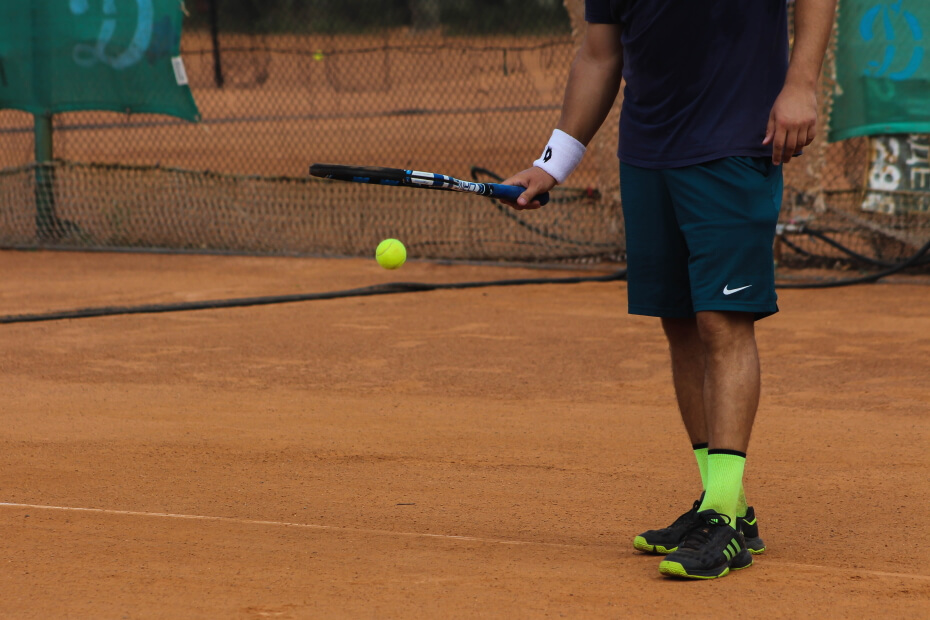
While it is true that becoming a professional tennis player requires intensive training, equipment, and travel — all of which can be expensive — there are ways that talented and dedicated individuals can achieve their goals even without substantial financial resources.
- Talent and Dedication: First and foremost, talent and dedication to the sport are necessary. All the money in the world cannot buy the passion, determination, and natural ability that many professional tennis players possess.
- Instruction and Training: Accessing professional coaching and training is often a challenge for less wealthy individuals. However, there are multiple programs, scholarships, and local clubs that offer free or low-cost coaching to talented players.
- Sponsorship: If a player is particularly gifted, they may be able to attract sponsors who will pay for travel, equipment, and training expenses. Sponsors are businesses or individuals who see potential in a player and are willing to help fund their path to the professional level. This often requires the player to excel in local and regional tournaments to gain attention.
- Federations and Associations: National Tennis Associations often have development programs aimed at nurturing local talent. They may subsidize the costs of training, travel, and equipment for the most promising talents, raising them to international standards without placing the financial burden upon the player or their family.
- Equipment & Travel: It’s undeniable that equipment and travel are large parts of the expense in tennis. Used or discounted equipment can lessen the costs, and regional tournaments can provide a competitive experience without excessive travel.
Playing tennis can be costly due to its various expenses, but it is not impossible for someone from a non-wealthy background to become a professional player. With talent, determination, creativity, resourcefulness, and the right opportunities, one can overcome the challenges and climb up the ranks to attain success in this sport.
Examples of Successful Tennis Players from Various Economic Backgrounds
When it comes to tennis, many people may assume it’s a sport only for the wealthy. However, a deeper look shows that this is not always the case. In fact, some of the greatest tennis players have come from different economic backgrounds. Athletes such as Andre Agassi, Maria Sharapova, and the Williams sisters are perfect examples of individuals who have worked hard and persevered to achieve greatness in the sport, regardless of their financial circumstances.
Andre Agassi, a star of the ’80s and ’90s, emerged from a working-class family in Las Vegas, Nevada. His father, an Olympic boxer, introduced him to tennis at a young age, igniting what would become a blazing career. Despite his humble beginnings, Agassi’s extraordinary talent led him to become one of the best tennis players in the world, proving that success in tennis is not limited to those with a silver spoon.
Maria Sharapova, in the same vein, rose from her modest background in Russia. Sharapova’s family moved from Siberia to Florida when she was just seven so she could train at a prestigious tennis academy. They went through hardships, but these did not overshadow Sharapova’s rise to becoming one of the world’s top female players.
Venus and Serena Williams, arguably the most recognizable tennis players, hail from a humble background in Compton, California. Their journey is a testament to beating the odds, overcoming financial barriers, and achieving greatness through tireless work and determination.
When one looks at these shining examples, it’s hard to label tennis as an exclusive domain for the rich. Tennis, like many other sports, is a test of skill, determination, and ambition. As Agassi, Sharapova, Williams sisters, and countless others have shown, success in tennis is not limited by economic status. These tennis icons are living reminders that with hard work, determination, and a genuine love for the sport, anyone can make a splash in tennis, irrespective of their financial status.
So, is Tennis a Rich Person’s Sport?
Despite its historical association with wealth and elitism, tennis has made significant strides towards inclusivity over the years. The proliferation of public courts and affordable equipment has made it possible for people from all socioeconomic backgrounds to participate in the sport.
However, it is worth noting that professional tennis still carries an air of affluence. The cost of training, travel, and equipment can be prohibitive for many aspiring players. Additionally, prestigious tournaments like Wimbledon continue to be associated with luxury and exclusivity.
Tennis has indeed come a long way from its elitist roots. While it retains some elements of its wealthy past, it continues to evolve into a more accessible sport for all.
